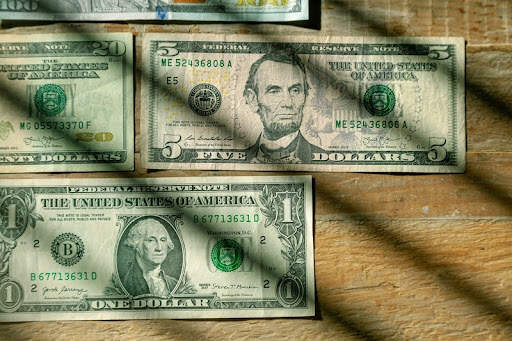
Same cash, different terms—know the risks and rewards of secured vs. unsecured loans.
When it comes to borrowing money, two main options often pop up: secured loans and unsecured loans. But what’s the difference, and how do you decide which one is best for your needs? Well, that’s what we’re here to explore. By the end of this post, you’ll have a clearer understanding of both types of loans, so you can make an informed decision about which is right for your situation.
Let’s dive in and break it down.
What Are Secured Loans?
First things first, let’s talk about what a secured loan is. In simple terms, a secured loan is a loan that’s backed by collateral. Collateral is something of value, like your home, car, or another asset, that you pledge to the lender. If you don’t repay the loan, the lender can seize your collateral to recover their money. Sounds a little risky, right?
Here’s an easy way to think about it: you’re offering up something valuable to secure the loan. In return, the lender feels more comfortable lending you the money because they have a safety net if things go south.
The Pros of Secured Loans
Now, let’s talk about the upsides of going the secured loan route. Sure, there are risks involved, but there are also some significant benefits that might make a secured loan an attractive option for you.
1. Lower Interest Rates
One of the biggest perks of secured loans is the lower interest rates. Since you’re offering collateral, the lender has less to worry about. That means they’re more likely to offer you a loan at a better rate, which could save you a lot of money over time. If you’ve ever been offered a credit card with sky-high rates, you know how important this is.
2. Easier to Qualify For
If you’ve got less-than-perfect credit, a secured loan might be easier to get approved for. Why? Because the lender has that extra layer of protection with your collateral. Even if your credit isn’t ideal, they know they can fall back on the asset if you can’t pay. So, don’t let a few dings on your credit report discourage you; this could still be an option for you.
3. Larger Loan Amounts
Since the lender has collateral to fall back on, they might be more willing to lend you a larger amount of money. If you need a hefty loan for a big purchase, like a home renovation or even a new car, a secured loan can give you the flexibility to borrow more.
4. Longer Repayment Terms
Secured loans typically come with longer repayment terms. This can make the loan more manageable, as you’ll have more time to pay it off. Longer terms often mean lower monthly payments, which could ease some of the pressure on your budget.
The Cons of Secured Loans
Of course, it’s not all sunshine and rainbows with secured loans. There are some risks you need to be aware of before you sign on the dotted line.
1. Risk of Losing Collateral
The biggest downside of a secured loan is the risk of losing your collateral. If you fail to repay the loan, the lender has the right to take your assets. And we’re talking about some serious stakes, your home, your car, or whatever valuable property you put up as collateral. The risk is real, so think carefully about your ability to make those payments before moving forward.
2. Potential for Higher Fees
Some secured loans come with fees that can add up. For example, if you’re getting a mortgage, there might be appraisal fees, closing costs, or even origination fees that add to the total amount you owe. While the interest rate might be lower, these extra costs can make the loan more expensive in the long run.
3. Longer Application Process
Secured loans can take longer to process. The lender needs to assess the value of your collateral, which could involve appraisals, paperwork, and a bit more back-and-forth. If you need cash quickly, this might not be the best option.
What Are Unsecured Loans?
Alright, let’s switch gears and talk about unsecured loans. Unlike secured loans, an unsecured loan doesn’t require collateral. Instead, these loans are granted based on your creditworthiness. So, if you have a solid credit history, you’re more likely to qualify. On the flip side, if your credit isn’t great, the lender might be hesitant to lend you money, or they may charge you a higher interest rate to make up for the added risk.
Since there’s no collateral involved, the lender doesn’t have anything to take back if you don’t repay the loan. Because of that, unsecured loans are considered riskier for the lender, and they usually come with higher interest rates and stricter eligibility requirements.
The Pros of Unsecured Loans
Even though unsecured loans come with their own set of challenges, they offer some attractive benefits.
1. No Collateral Required
The most obvious benefit of an unsecured loan is that you don’t have to put anything up as collateral. No need to risk your car or home in exchange for a loan. This can provide peace of mind, especially if you don’t want to risk losing your assets
.2. Faster Approval Process
Since there’s no collateral to appraise or inspect, unsecured loans usually have a faster approval process. If you need money in a hurry, say for a sudden emergency or an unexpected expense, this can be a big advantage.
3. Less Risk of Losing Assets
Let’s face it: the idea of losing your house or car because you couldn’t repay a loan is scary. With an unsecured loan, that’s not a worry. If you can’t repay the loan, the lender can take you to court or damage your credit, but they can’t seize your property. For many people, this makes unsecured loans feel less risky.
The Cons of Unsecured Loans
But don’t be fooled, unsecured loans come with their own set of downsides that can make them less appealing depending on your situation.
1. Higher Interest Rates
Since there’s no collateral to back up the loan, unsecured loans usually come with higher interest rates. The lender is taking on more risk, so they make up for it by charging you more. If you’re not careful, those high interest rates can add up fast and cost you more in the long run.
2. Stricter Eligibility Requirements
Getting approved for an unsecured loan can be a bit more challenging, especially if your credit isn’t great. Lenders want to know that you’ll be able to repay the loan, and if your credit score is low, they might be hesitant to approve you. This can be a barrier for many people who need access to funds but don’t have the best credit history.
3. Smaller Loan Amounts
Unsecured loans typically come with smaller loan amounts than secured loans. If you need a large sum of money, you may not be able to borrow as much with an unsecured loan. This can be limiting if you have bigger financial needs.
How to Choose the Right Loan for You
By now, you’re probably thinking: “Which loan should I go with?” The answer depends on your situation. Here are some factors to think about as you make your decision:
1. Consider Your Financial Situation
Are you financially stable enough to take on a loan with collateral? Or is the risk of losing an asset too much to handle? If you’re in a good financial position, a secured loan might make sense because of the lower interest rates and larger loan amounts. However, if you’re worried about the possibility of losing something important, an unsecured loan might feel safer.
2. How Much Money Do You Need?
If you need a large sum, a secured loan might be your best bet, as these loans tend to offer larger amounts. On the other hand, if your needs are more modest, an unsecured loan might do the trick without putting anything on the line.
3. How Much Time Can You Commit to Repayment?
Secured loans often come with longer repayment terms, which can make them more manageable. If you’re looking for a longer term to pay off your debt, a secured loan might be a better option. However, if you need something quicker and simpler, an unsecured loan with a shorter repayment term might be more suitable.
Conclusion
Both secured and unsecured loans have their pros and cons, and the best choice depends on your individual needs and circumstances. Secured loans offer lower interest rates and easier approval, but they come with the risk of losing your collateral. Unsecured loans are risk-free in terms of assets but tend to have higher interest rates and stricter eligibility requirements.
At the end of the day, the right loan for you is the one that aligns with your financial goals and risk tolerance. Take some time to weigh the options, consider your needs, and make an informed choice.
Now that you’ve got the lowdown, which loan fits your situation best?



